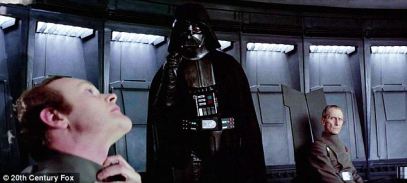“Don’t be too proud of this technological terror you’ve constructed. The ability to destroy a planet is insignificant next to the power of the Force!”
~Darth Vader to Admiral Motti, referring to the space station, “Death Star”
In December, episode VII of the Star Wars saga, The Force Awakens, will hit theaters worldwide. According to insider’s reports, the new movie will feature some old familiar faces. Cinemablend.com has leaked that we can expect to see Luke Skywalker, Princess Leia and Han Solo again. And not only that, the original actors, Mark Hamill, Carrie Fisher, and Harrison Ford, will be doing the acting—albeit much older versions of the young, swashbuckling trio from the 1977 blockbuster.
“I\’d like to wear my old (cinnamon buns) hairstyle again—but with white hair. I think that would be funny.” ~ Carrie Fisher
How has this cosmic battle that occurred a long time ago in a galaxy far, far away been able to keep movie-goers spellbound in their seats for three generations? Well, some might claim this is an easy question being that all of the essential ingredients for a good story are evident throughout the saga: The element of good versus evil, a “forbidden love” story, great fight scenes and special effects, tragedy, betrayal, revenge, etcetera, etcetera. However, many not-so-successful movies and books also feature one or more of these elements. So, what separates George Lucas’ masterpiece from the rest of the crowd? Could it have something to do with the mystical, supernatural energy known as “The Force?”
In Star Wars, this metaphysical, ubiquitous power holds enormous importance for both the Jedi and Sith monastic orders. The Force was introduced in the original film and has been a focus of every incarnation of the series, including the expanded universe of video games, novels, and comic books. Lucas said the concept for this supernatural flow of energy is Prana (also known as Qi/Chi/Ki), which has been labeled the “all-pervading vital energy of the universe.” In the movies, the Force contains many categories and actually gets rather complex, but the important thing to remember is that it’s an energy field created by all living things that surrounds and penetrates living beings, and binds the galaxy together. In the words of Obi-wan Kenobi, played by Alec Guiness: “It surrounds us and penetrates us. It binds the galaxy together.”
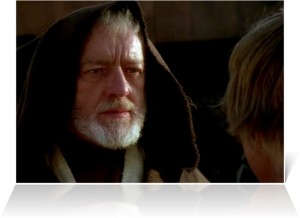

Undoubtedly, both the lovable and deplorable characters in Star Wars also account for much of its success too. Children as well as the elderly fell in love with the ‘Laurel and Hardy’ duo of R2-D2 and C-3PO. And who could ever forget Jabba the Hutt, or some of the strange and eerie characters at the Mos Eisley port? But as a collective, the most intriguing group the series has to offer its fans is the heroes known as the Jedi Knights. As fighters, Jedi’s are depicted as being without peer or rival; so many jumped to the conclusion that Lucas based this battalion of warrior-wizards on the Samurai of Japan. Similar to “the Way of the Sword,” which was the life-long goal of generations of Samurai, mastery of the Force is the objective of the Jedi. So, both the Force and the Jedi are based on something real, but we still need a few more details about how George Lucas came up with these concepts.
It has been reported that Lucas was influenced by a 1958 Japanese film, The Hidden Fortress (隠し砦の三悪人), which was directed by Akira Kurosawa, and a little-known 1963 abstract film called 21-87 by Arthur Lipsett. However, this may not be the entire story.
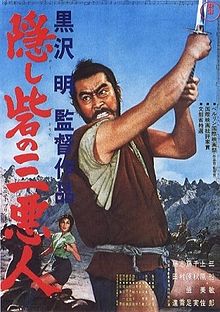
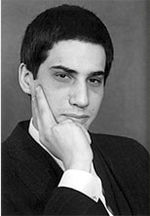
Justin Thomas, a self-proclaimed “Star Wars Nerd,” is a lecturer, public speaker, and author. His research on the origin of the series has turned up some interesting facts. In a 2011 interview on the show Truth2Power, hosted by Ms. Beverly D, Thomas states that back in the 1990s, he was immersed in deep esoteric studies. In a book he was reading entitled, The Ankh: African Origin of Electromagnetism, he stumbled upon the word “Djed.” Sometimes pronounced “Tet,” “Zed,” or “Jed,” Thomas explains that the Djed Pillar symbolizes stability, and is represented by the spine of the Egyptian god, Osirus. “It exemplifies kundalini and goes into the DNA and melanin,” Thomas claims. “All you have to do is put an “i” at the end of ‘Jed’ and you have Jedi.”
“Who’s lying? And who’s using my stuff?” ~ Justin Thomas, explaining his mindset during his research projects
In order to understand Star Wars, Thomas studied the series from the perspective of both a writer and someone with an Afrocentric mindset. Although George Lucas has admitted the Samurai are part of the picture, Thomas claims that in several interviews Lucas became “a little bit rebellious” about some of the things being said about his movies. During one of those interviews, Lucas reportedly said, “No, the Jedi are not totally based on the Samurai.” Justin claims this caused him to raise an eyebrow.
In spite of all the research available which refutes the notion of Caucasian rulers in the ancient world, movies like Exodus have been the standard in Hollywood stretching all the way back to The Ten Commandments. Justin claims when it’s all said and done, Star Wars is just another case of Hollywood white-washing.
“Don’t get me wrong, I’m a big (Star Wars) fan…but we know that within Hollywood, these guys are heavy occultists…they’re using our knowledge to project themselves how we (blacks) were in ancient times.
According to Thomas, the origin of the Jedi Knights is none other than the ancient “Djedhi Khepri,” better known as the “Wisdom Keepers.” These legendary warrior-scholars were the guardians of sacred knowledge in black kingdoms in and outside of Africa. A global order, he explains they had various names depending on the geographical location. On the Mother Continent, some of the groups studied the ‘Dark Side’ as the Order of Melanophoris and the Order of Seth (Sith Lords). The “Amaru” clans inhabited the Americas, and in parts of Asia, they were known as the “Lung”, or the “Nagas.”
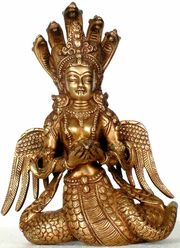
So it seems that instead of asking if the Samurai were the inspiration for the creation of the Jedi, perhaps a better question is: Did the Samurai descend from Nippon’s version of the Djedhi Khepri?
Thomas goes on to explain that all the orders, in all the lands, looked to the Djedhi Khepri to guard their scrolls and bound papers. Not only did these male and female, black warrior-priests guard these sacred books, but they also were required to master the knowledge contained within them. In a day and age where power is known to corrupt, it may be difficult for us to imagine that the deadliest scholars, professors, and philosophers were also hailed as being the most benign and upright citizens. As leaders, they added the stability that may be lacking today in modern society.
Some may ask: Why is it so important to specify that these people were black?
Dr. Francis Cress Welsing teaches that the dominant system in the world today, i.e. racism/white supremacy, is an ongoing 24-7-365 phenomenon. For this reason, she teaches that all of us should be talking about racism and its effects every day.
Justin Thomas points to a scene in The Empire Strikes Back where the black-white issue may have been subliminally played out in the mind of Lucas. Who could ever forget the fight-scene, as well as the ongoing conversation that took place, between Darth Vader and Luke Skywalker.
“Back in 1980, this big, black figure (chuckles) looks at this little whiteboy and says, “I am your father…and the quick denial by Luke to scream ‘No!’ That was such a powerful scene if a person is conscious because you see a huge black figure…his armor is black but the voice is James Earl Jones…telling this whiteboy that ‘I am your father!’”

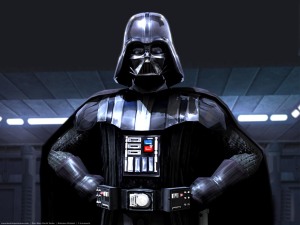
Thomas goes on to emphasize the blackness of Darth Vader, calling him “a shadowy figure,” and even “black, black, I mean negro black.” The interview is a must-hear for all Star Wars fans for even deeper reasons too because Justin Thomas takes the conversation to the occult level by pointing out how the colors of the light-sabers reflect the chakra level of its owner. “That’s why Master Windo, played by Samuel Jackson, had a purple light-saber…he was the leader, the crown chakra,” Thomas explains. “Green is the heart chakra…whenever you see a Jedi using a green light-saber, you know he’s gonna win the fight.”


Is the origin of the light-saber the Djed Pillar? Did George Lucas visually depict the ancient Egyptian ceremony called the “Raising of the Djed Pillar” in one of the scenes, as Justin claims?
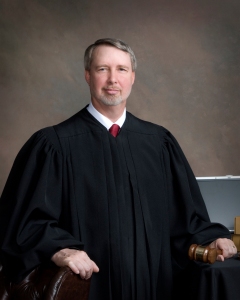
Recently, Professor Griff on his show, NME Mindz, hosted by himself and Ms. Zaza Ali, asked his listening audience if anyone knew what the occult meaning was of why judges wore black robes in court. Dr. Ashra Kwesi points-out that in addition to judges, umpires, referees, and graduating students are also ritualistically clad in black. “To sum it up,” Dr. Kwesi says, “black attire for ministers, priests, judges, and scholars is the norm in the white supremacy system and culture, worldwide.”
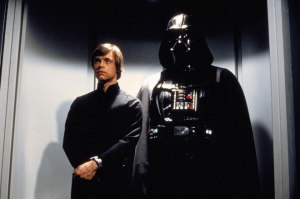
The Jedi Knights are usually cloaked in black, or some dark color too. Is there a connection? According to Dr. Aseer Ali Cordoba there is. “The Force is Allah manifested through melanin,” he says. “That’s why Luke and his pops wore all-black.”
Nowadays, in the conscious community, whenever the topic of darkness or the color black comes up, a discussion on melanin is not far behind. Scientists have revealed that melanin absorbs all forms of energy and the darker the shade, the more potent it is. But science aside, what color do you think is most appropriate to symbolize omnipotent wisdom and strength?
What do you think?
Note: This is the part of a series to introduce the trilogy entitled: Gaikokujin: The Story of Hip Hop, Race, and Pursuing the American Dream.

Sources:
http://starwars.wikia.com/wiki/The_Force
Justin Thomas Interview:
http://www.blogtalkradio.com/truth2power/2011/02/21/teferu-azr–the-ancient-djedhi
Book:
The Ankh: African Origin of Electromagnetism; by Nur Ankh Amen
[contact-form][contact-field label=\’Name\’ type=\’text\’/][contact-field label=\’E-mail Address\’ type=\’text\’/][contact-field label=\’Message\’ type=\’text\’/][contact-field label=\’Website\’ type=\’text\’/][/contact-form]

